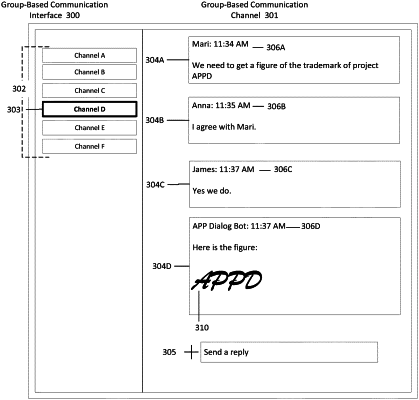| CPC H04L 51/046 (2013.01) [H04L 12/1813 (2013.01)] | 20 Claims |

|
1. A computer-implemented method comprising:
receiving, from a client device associated with a group-based communication system, user interaction data associated with the group-based communication system;
inputting the user interaction data to a machine learning model, wherein the machine learning model is generated based at least in part on historical triggering event identification data, wherein the machine learning model is trained on first data that includes a labeled user representing a user profile associated with an application dialog data and on second data that includes the user profile associated with a type of the user interaction data, wherein the machine learning model includes a normalization function to parse the user interaction data into data units;
receiving, from the machine learning model, a triggering event associated with an application external to the group-based communication system;
sending an application dialog request, associated with the triggering event, to the application;
in response to sending the application dialog request to the application, receiving an application dialog from the application, wherein the application dialog includes instructions for rendering, via a group-based communication user interface associated with the group-based communication system, a group-based message including a template associated with the application; and
based at least in part on a determination that the application is validated for communication with the client device, outputting the application dialog to the client device for display via the group-based communication user interface.
|